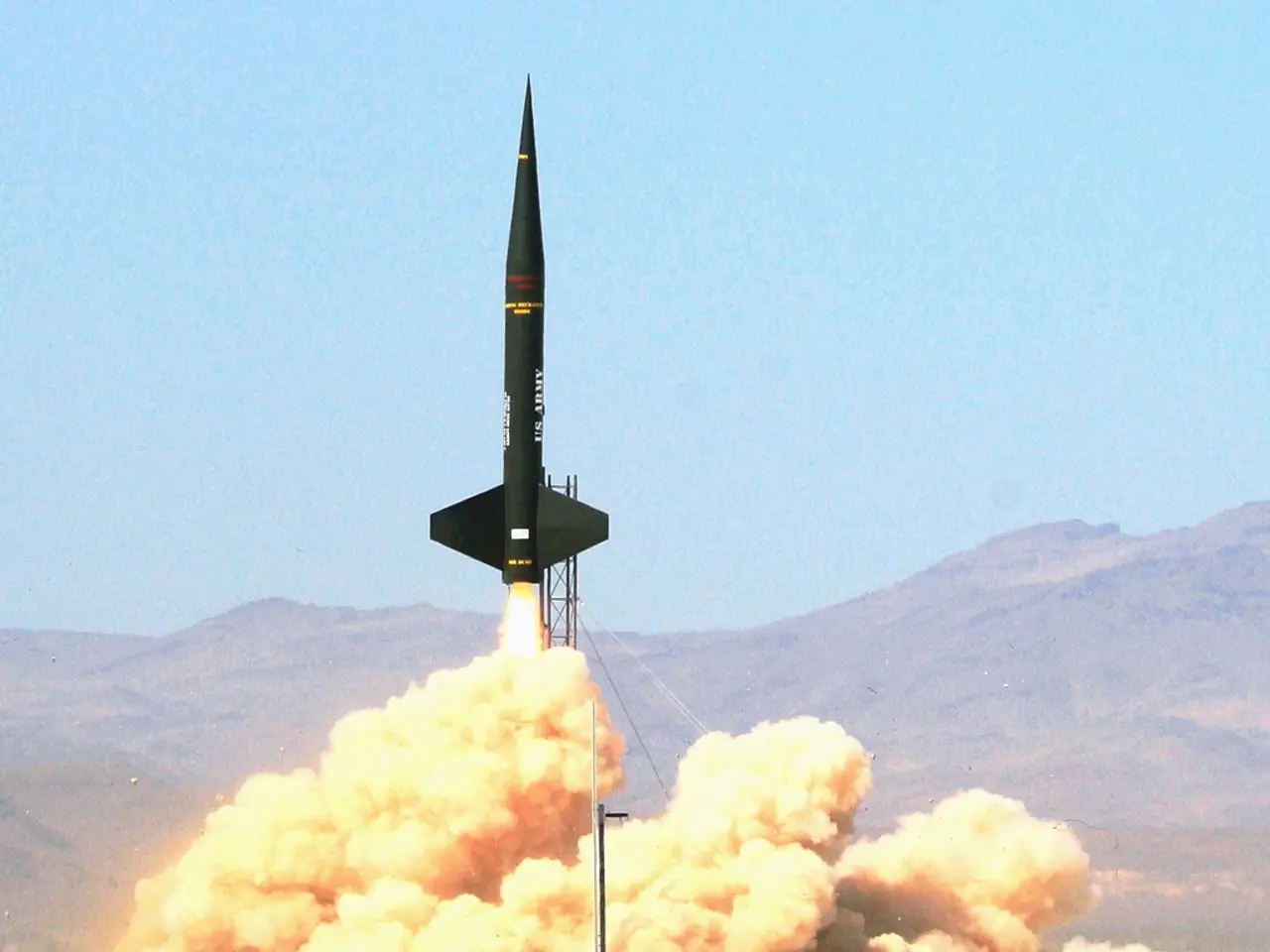LEO Explained: A Comprehensive Guide to Low Earth Orbit, encompassing essential terms related to Rocketry and Propulsion
Low Earth Orbit (LEO), a region of space ranging from 160 kilometers (100 miles) to 2,000 kilometers (1,200 miles) above Earth's surface, is becoming a hotbed of activity in the realm of space exploration and satellite technology. LEO satellites, which orbit closer to Earth than their counterparts in Geostationary Orbit (GEO) and Medium Earth Orbit (MEO), offer several advantages that make them ideal for a variety of applications.
Current Developments
Internet Access and Connectivity
LEO satellites are revolutionizing global connectivity by providing high-speed internet access to remote and underserved areas, bypassing traditional infrastructure. SpaceX's Starlink, with over 7,800 satellites in orbit, is a leading example, serving millions of users [2].
Real-Time Imaging
LEO satellites are increasingly used for real-time imaging applications, benefiting from their ability to revisit the same location frequently. This capability is crucial for applications like disaster response and monitoring environmental changes.
Remote Sensing
LEO satellites are extensively used for remote sensing, offering high-resolution images and data crucial for agriculture, climate monitoring, and urban planning.
Quantum Communication Satellites
China plans to launch quantum communication satellites into LEO, enhancing secure communication capabilities [3].
Military Applications
The U.S. Space Development Agency is deploying constellations of data transport and missile warning satellites in LEO to enhance military communications and security [4].
Future Developments
Propulsion Systems
The LEO satellite propulsion system market is expected to grow significantly, driven by advancements in electric propulsion and the need for more efficient orbit control [1].
Market Expansion
The global LEO satellite market is projected to grow seven-fold by 2035, reaching a potential value of $457 billion in optimistic scenarios. This growth will be fueled by the increasing demand for internet access and the expansion of mega-constellations [2].
Technological Innovations
Future developments will focus on innovations like digital beam-forming technology, which China has recently achieved breakthroughs in, enhancing the capabilities of LEO satellites in various applications [5].
Inclusion and Accessibility
There is a growing emphasis on making digital connectivity a public good, with LEO satellites playing a key role in connecting the unconnected and supporting sustainable development [2].
Technological Challenges
Despite the advancements, challenges remain in achieving higher thrust levels in electric propulsion systems and developing reliable refueling infrastructure in space [1].
LEO satellites, with their shorter communication delays and lower latency, continue to be a cost-effective option for satellite deployment compared to satellites in higher orbits. Their proximity to Earth provides faster communication and data transmission, a significant advantage in various applications. However, LEO satellites must contend with atmospheric drag, which can cause them to lose altitude over time and eventually re-enter the Earth's atmosphere.
Despite these challenges, companies such as SpaceX and OneWeb are actively deploying constellations of LEO satellites for global internet coverage and expanding the capabilities of satellite technology. The future of Low Earth Orbit holds great promise for space exploration and satellite technology, with advancements in rocket technology and satellite design.
Science and technology have found a fertile ground for innovation in Low Earth Orbit (LEO), where the boundaries of space exploration are being pushed. LEO satellites, with their proximity to Earth, are revolutionizing multiple realms, from internet access and connectivity to real-time imaging, remote sensing, quantum communication, and military applications. Furthermore, the future of LEO satellites is not only promising but also filled with technological innovations, like digital beam-forming technology, that will continue to enhance their capabilities.




